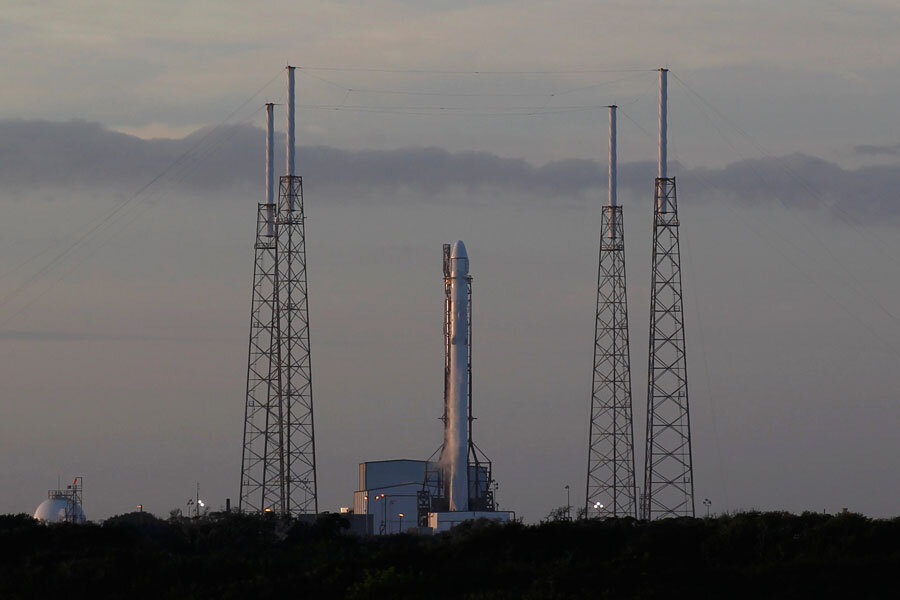SpaceX scrubs rocket launch: why it must wait until Friday to try again
The launch of a resupply mission bound for the International Space Station was called off less than two minutes before liftoff early Tuesday after a malfunction cropped up related to the motor on the rocket's second stage.
The rocket, Space Exploration Technology Corporation's Falcon 9, signaled a problem with one of two actuators critical for steering the second stage to keep it on course. The actuators move the second-stage motor's exhaust nozzle to change the direction of the motor's thrust.
If this mission had been a satellite launch rather than a rendezvous mission, in principle it might have been possible to troubleshoot the problem and launch later in the morning. But the demands of a rendezvous with the space station, which orbited directly overhead shortly before launch, meant that the SpaceX team had to launch at 6:20 a.m. Eastern Standard Time.
The malfunction occurred too close to launch to allow time to investigate the cause. The next opportunity for a launch comes at 5:09 a.m. Friday morning.
The Dragon cargo capsule atop the rocket is carrying some 2.5 tons of food, spare parts, experiments, and tools that station crew members will need to install new docking adapters to the station. On its return, Dragon is expected to carry nearly 2 tons of cargo back to Earth.
The launch also aims to make the first attempt at bringing Falcon 9's spent first stage to a controlled landing on something other than the open ocean. SpaceX has acquired a floating landing platform on which it will attempt to land the first stage. The experiment represents a step toward SpaceX's goal of building a fully reusable rocket,.
The platform, known as the autonomous spaceport drone ship, sports powerful thrusters to keep it in one spot. In addition, the Falcon 9 has been redesigned. Part of that redesign added landing legs to the first stage, as well as four adjustable fins that resemble oversized rectangular tennis racquets. Through carefully orchestrated movements, these gridded fins are designed to help keep the first stage on course during its descent to the drone ship.
The drone ship's landing surface measures 100 feet by 300 feet, a tiny target to hit from 150 miles up. Previous experiments with the soft-landing system, which ended up in the Atlantic Ocean by design, brought the first stage to its landing spot, give or take about six miles. The new system is designed to land the stage within about 30 feet of the landing surface's center.
SpaceX gives the experiment a 50-50 chance of succeeding on this first try, noted Hans Koenigsmann, SpaceX's vice president for mission assurance, late Monday afternoon. Even so, those were pretty good odds given the goal, he acknowledged.






